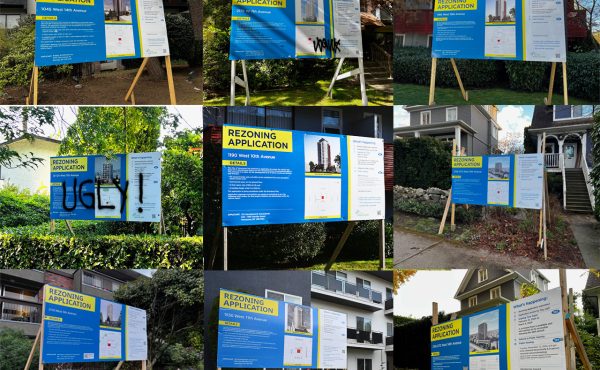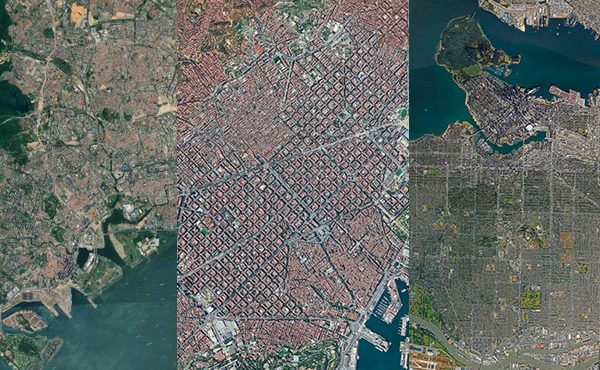
In just one month, well-known YouTube personality Uytae Lee released three high-profile videos addressing the creation of new downtowns, taxes, and mass-produced housing. While his signature affability remains intact, the captions suggest a notable shift that began earlier, including controversial episodes like The Problem with Public Hearings. These episodes were produced in partnership with organizations and agencies—each with a vested interest in the narratives being promoted. Some partnerships may be relatively benign, but the videos signal not just a new chapter in Lee’s career, but a broader trend: the rise of “planner-influencers”—individuals who build large audiences by sharing urban planning content.
Figures like Uytae Lee, who use platforms like YouTube to present urban issues in a digestible and engaging manner, exemplify this phenomenon. They also highlight the risks and limitations of using social media to address the complexities of urban planning.
Lee’s case is especially interesting due to his background as a graduate of Dalhousie University’s Community Design program. His video production journey began during his studies when he co-founded PLANifax, a non-profit dedicated to educating the public on planning issues in Halifax through video content. After relocating to Vancouver in 2018, he launched the About Here series, a platform that demystifies planning topics like zoning reform, public washrooms, and cycling infrastructure, helping viewers better understand the cities they live in.
Despite this background, Lee neither practices in the field nor conducts academic research in urban planning. While his knowledge places him above most aspiring planner-influencers, it remains limited. His true strength lies in crafting videos that combine light humor with topics rarely discussed in mainstream media, capturing public attention and respect from some professionals. In earlier work, this often resulted in more balanced portrayals of complex issues.
However, Lee’s recent videos reflect a clear shift. The curated voices of commissioning organizations increasingly shape the content, diluting its independence. This shift should prompt the urban planning community to critically reassess the role social media plays in shaping public understanding. When public agencies and advocacy organizations commission content from influencers, the line between education and promotion becomes dangerously blurred, especially when the influencer lacks editorial independence or professional obligations to fairness or accuracy.
While planner-influencers raise awareness and spark interest, they often prioritize engagement metrics—click-through rates, likes, and shares—over nuance and accuracy. Social media algorithms worsen the problem by rewarding content that maximizes attention, not understanding.
Creators like Lee are incentivized to craft emotionally charged, visually appealing, or controversial content to boost visibility, sometimes at the expense of ethical integrity. This disconnect between what garners views and what responsibly informs the public can distort understanding, reducing complex issues to oversimplified or strategically framed narratives that align with platform dynamics or client agendas.
Different media formats vary in their ability to engage with complexity. Books allow in-depth exploration of urban planning’s trade-offs and historical layers. Documentaries, though less comprehensive, can still provide valuable case studies. A 20-minute YouTube video, while engaging, often sacrifices depth for brevity. The limitations are even more pronounced on platforms like Twitter/X or TikTok, where content must be ultra-condensed.
This mismatch between content format and subject complexity underpins many challenges in using social media for urban planning discourse. Multifaceted issues—such as zoning policy or sustainability goals—require time and context to unpack. When reduced to short-form content, critical nuances are often lost, leaving the public with surface-level or misleading impressions. Lee’s The Problem with Luxury Housing, for instance, presents a reductive view of trickle-down economics, ignoring substantial evidence of how luxury housing developments in high-rise residential buildings he seems to be supporting in the video, have displaced vulnerable communities and driven up land values.
Social media thrives on content designed for rapid consumption. On platforms like Twitter/X, where brevity is king, complexity is sacrificed. Urban planning debates—from zoning to transit-oriented development—are distilled into viral hashtags or provocative soundbites. Trade-offs, long-term implications, and competing stakeholder needs rarely feature in these snapshots.
For example, a proposal to increase housing density might be reduced to slogans like “affordable housing for all” or “neighbourhood destruction.” These polarizing framings leave little room for the nuanced dialogue necessary to address community concerns, environmental trade-offs, or infrastructure constraints. Public discourse is thus shaped by oversimplifications that hinder informed decision-making.
The simplicity of social media also fosters misinformation. In urban planning, where data and projections play critical roles, incorrect or cherry-picked statistics can spread at lightning speed. Viral posts exaggerating costs or misrepresenting project impacts can provoke backlash based on flawed premises.
Social media’s amplification mechanisms—likes, shares, and comments—worsen the issue. Controversial or sensationalist content tends to outperform balanced analysis. As a result, misinformation often dominates timelines, shaping public opinion faster than planning processes can respond to and counteract.
Algorithms further entrench this by showing users content aligned with their views, creating echo chambers. This deepens divisions within communities, especially in debates that already involve conflicting interests. Urban planning debates—already prone to tension between stakeholders with competing interests—become even more polarized. Online, residents advocating for affordable housing might find themselves pitted against those prioritizing historical preservation, with little opportunity for constructive dialogue. These divisions hinder consensus-building, a cornerstone of effective urban planning.
A clear example is Lee’s critique of public hearings, which fails to acknowledge these processes as historically rooted efforts to safeguard public voice. His decontextualized critique fails to recognize his argument as a part of the lineage of the processes that have been working for centuries to disenfranchise public opinion, and undermine the “commons.” It glosses over how public consultation emerged as a check against technocratic abuses—like the relatively recent destruction of Hogan’s Alley in Vancouver or Africville in Halifax.
What makes some of Lee’s videos especially troubling is not simply that they misrepresent technical matters, but that they reframe them in ways that erode democratic understanding. By portraying public hearings as mere “theatre,” Lee reduces centuries of struggle for civic participation into a spectacle of inefficiency—without offering a serious democratic alternative. Although his proposal for “Residents’ Assemblies” may sound promising, he overlooks their major shortcoming: recommendations are non-binding. This severely limits their democratic power.
Consider the Grandview-Woodlands Citizens’ Assembly in Vancouver. Formed in response to community pushback against a redevelopment proposal at 1780 East Broadway that undermined the extensive year-long community engagement process, the Assembly submitted guidance meant to shape the project and neighbourhood. However, in the final stages, city officials overruled key recommendations—including those about the Safeway site that sparked its creation to begin with.
In doing so, the City proceeded with a version of the development that contradicted not only the Assembly’s conclusions, but the very process designed to give residents a voice.
Ironically, this is the very site featured in Lee’s video, repurposed as a symbol of anti-housing sentiment and stripped of its contentious planning history. In doing so, Lee obscures the very dynamics that erode public trust.
Neil Postman’s Amusing Ourselves to Death warned that the medium shapes the message: as discourse moves from print to image-based platforms, substance gives way to spectacle. Social media, inheriting this aesthetic logic, accelerates this shift. Lee’s slick visuals and fast pacing reflect that logic—favoring simplification, distraction, and emotional resonance over evidence or deliberation.
Social media rewards engagement, not depth. This undermines the democratic ideal of an informed public. As one guest on The Big Story podcast noted, the rise of online storytellers has blurred the line between journalism, commentary, and influence. These creators may reflect community sentiment, but without the standards of transparency, verification, and balance that define journalism. Their authority is derived from charisma and algorithmic reach—not from expertise or accountability.
As highlighted in the podcast, ethics in journalism—fact-checking, balanced sourcing, accountability—aren’t just formalities; they’re what distinguish reporting from influence. Without these guideposts, even well-meaning storytellers can unintentionally mislead.
The distinction between ethical reporting and popular storytelling becomes ever more vital. What’s at risk isn’t just misrepresentation—it’s the erosion of public trust in democratic processes and professional expertise. As the podcast guest put it, “There is a difference between influencing and storytelling”—a distinction increasingly lost in our feeds.
That trust gap is growing. A recent piece by the Canadian Centre for Policy Alternatives warns that we are entering an era where people “cannot tell what is true and what is not.” This erosion of shared understanding, accelerated by the merger of entertainment, opinion, and algorithmic curation, threatens democratic and informed discourse.
When the voices of planners, journalists, and scholars are flattened into more content in a scroll, decision-making becomes a popularity contest. The result is slot-machine urbanism—a way of learning about cities shaped less by informed debate and more by the mechanics of online engagement. People absorb fragmented lessons one pull at a time, guided by what the algorithm serves next. In this environment, the public becomes not only misinformed but disoriented—unsure of whom to trust, and vulnerable to the most viral narrative.
To counter this, we must rethink how we engage with urban planning online. Improved media literacy can help people critically assess content, question oversimplifications, and seek credible sources. Planners must also adapt, finding ways to communicate complexity in formats that align with social media’s limitations without succumbing to its reductive pressures.
Social media has the potential to connect planners with the communities they serve. But without care, it risks deepening divides, spreading misinformation, and trivializing the hard work of building better cities. Urban planning deserves platforms as nuanced as the cities it seeks to shape.
Until then, the tension between these spheres will remain a cautionary tale. Planner-influencers—however well-intentioned—operate within this trap and must be held at a critical distance. Their success hinges on simplifying complex problems into digestible content—convenient for clients, optimized for algorithms, but corrosive to public understanding.
What’s lost in the scroll is what cities need most: time, context, and care.
***
Erick Villagomez is the Editor-in-Chief at Spacing Vancouver and teaches at UBC’s School of Community and Regional Planning. He is also the author of The Laws of Settlements: 54 Laws Underlying Settlements Across Scale and Culture.





4 comments
Doing what good muckraking journalists do in an editorial like this, Erick, I am sure you reached out to Uytae for his reaction and statement on your position here? I look forward to this essential disclosure in order to advance the civic discourse about planning! Time, context and care, right? thank you.
Thanks for your note, Meg.
I actually reached out to Mr. Lee some months ago, offering a kind note about misinformation that had circulated in some of his videos. I also shared links that presented a more comprehensive view of the issues and suggested the possibility of follow-up content to provide additional context. Unfortunately, I didn’t receive a response.
That said, Mr. Lee did present his work at the School of Community and Regional Planning this past year. To his credit, he was candid in acknowledging that he is neither a practicing planner nor an academic researcher. He was also transparent about his approach: the importance of click-through rates, the emotional charge of topics, and how he builds audience trust. He openly discussed the fact that his content is sometimes shaped by the priorities of those who commission it. He even expressed some discomfort with particular episodes (notably the public hearing video), but said, quite frankly, that it was his full-time job—unlike his earlier videos, which were produced while working other roles.
Those of us in the room—around 60 to 70 faculty, students, and professionals—appreciated that honesty. Much of what I raise in the article reflects what he openly shared in that forum. Sadly, it wasn’t recorded, so I could not link to it in the article.
While Mr. Lee serves as a local example for the piece, the broader argument isn’t about him personally. It’s about the structural tensions between media formats and the complexity of planning, between influencing and informing—and what happens when social media platforms, and those who shape narratives within them, begin to supplant evidence with whatever garners the most attention. I could just as easily have referenced other high-profile creators in the space—City Nerd, Not Just Bikes, and others. The argument would have held.
In that sense, the article is less a takedown and more a provocation to think about the future of civic discourse—and how we might better balance reach with rigour, and speed with care.
At one point in time, I’m pretty sure some might have asks similar questions and levelled similar critiques at the original Spacing Magazine itself – which was, if I recall correctly, never itself heralded as either practitioner led or practice focused.
Great to hear from you, Karen—and you’re absolutely right that Spacing itself was once seen as pushing boundaries. That’s part of what makes this conversation worthwhile.
But it’s also important to recognize that Spacing’s origins and approach differ in key ways from today’s planning influencers. It wasn’t a single voice projecting personal takes, but a platform built through collaboration—writers, researchers, artists, practitioners, advocates. And while Spacing never claimed universal expertise, it actively engaged those who had it.
The core of the piece—and really, the spirit of Spacing itself—isn’t about gatekeeping. It’s about examining how stories about cities get told, and what happens when platforms flatten nuance in favour of reach. That’s not a critique of media per se, but a call to think more critically about its power.
Each medium has its strengths. But we need to ask not just what messages they spread—but who benefits from them, and what gets lost along the way.